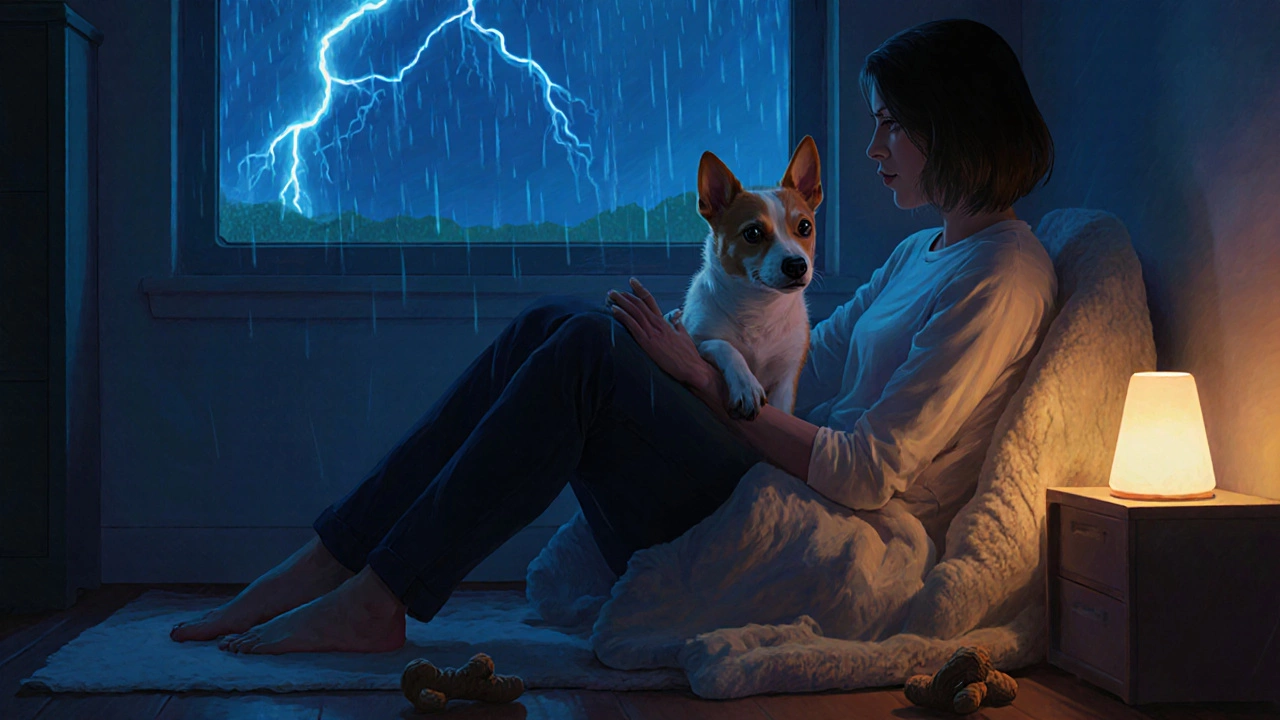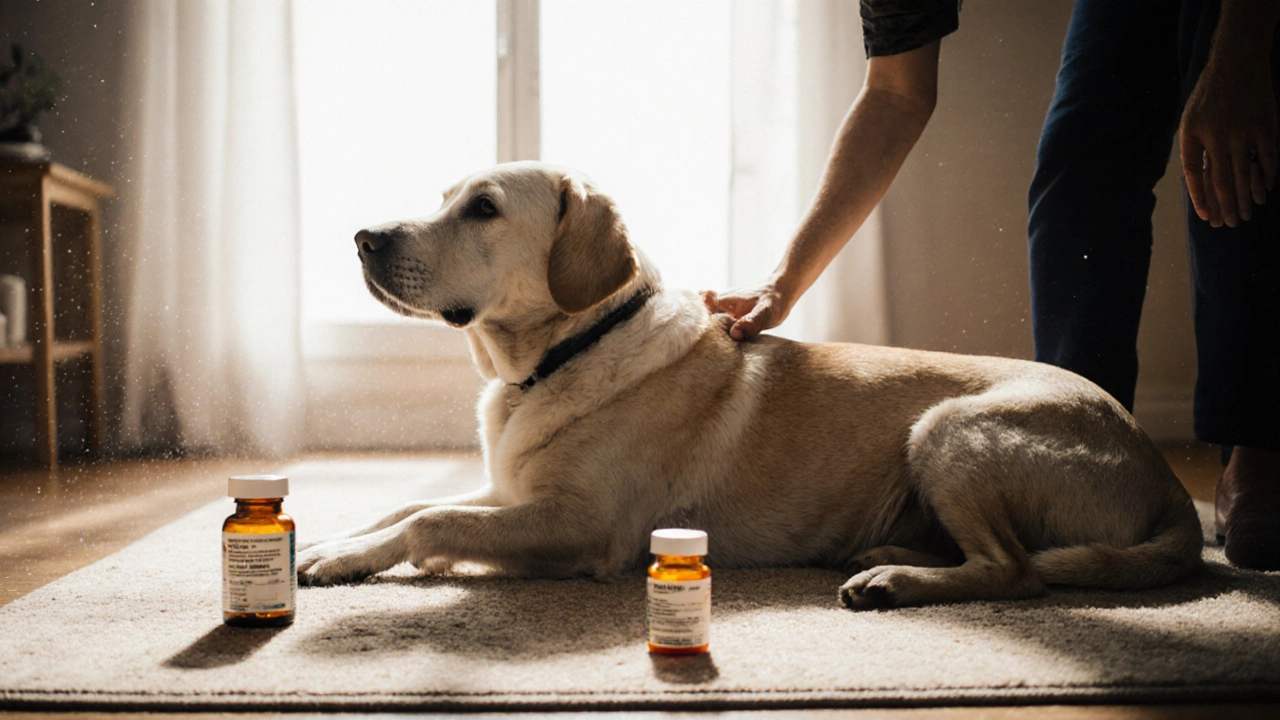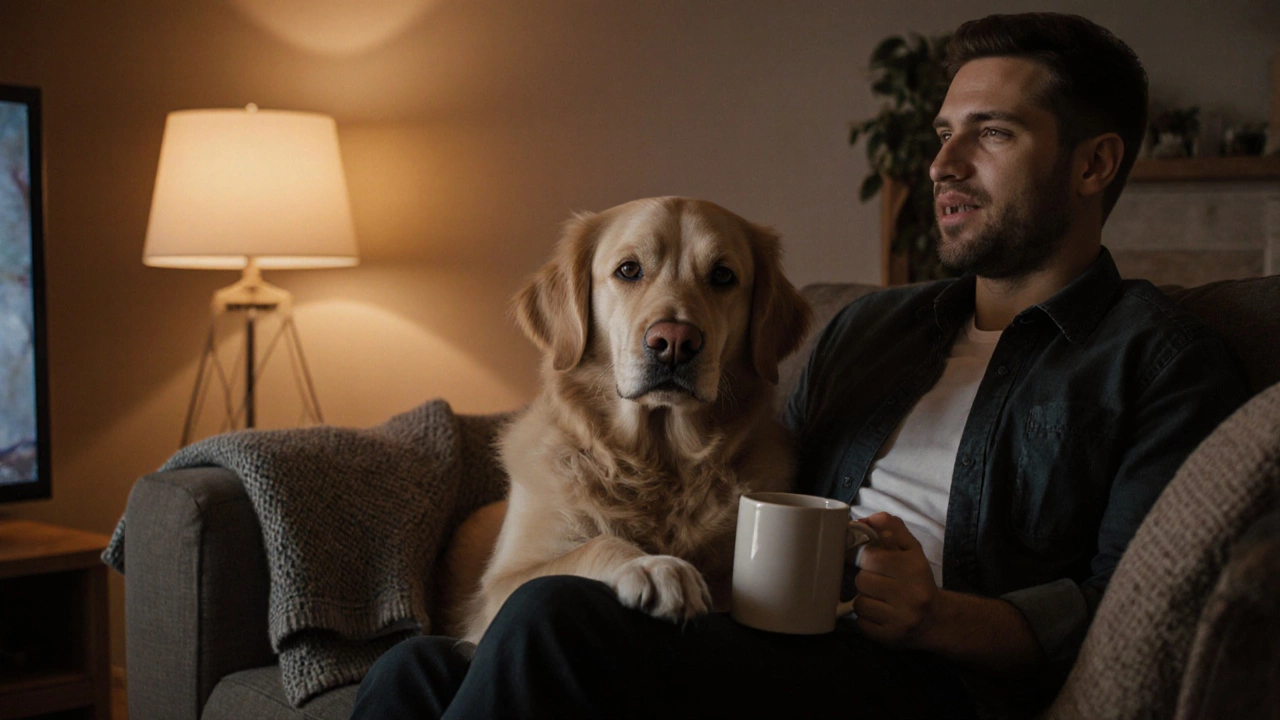Ever had your dog gently rest his paw on your leg while you’re watching TV, or tap your arm during breakfast like he’s trying to start a conversation? It’s sweet, maybe even cute-but why does he do it? This isn’t just random touching. It’s communication. And if you’re wondering why your dog puts his paw on you, the answer isn’t always about food, attention, or begging. Sometimes, it’s deeper than that.
He’s Saying ‘I’m Here With You’
Dogs are pack animals. In the wild, physical contact keeps the group close, reassures members, and strengthens bonds. When your dog puts his paw on you, he’s doing the same thing. He’s not asking for something. He’s saying, I’m right here. This is especially common after you’ve been away, or when he senses you’re quiet or stressed. He doesn’t understand your emotions the way a human does, but he feels them. And he responds by getting physically closer.Think about it: when you sit down after a long day, does your dog immediately press against your side? That’s not coincidence. It’s instinct. He’s mirroring the closeness he sees in other social animals. Studies from the University of Lincoln found that dogs show increased oxytocin levels-often called the ‘bonding hormone’-when they make physical contact with their owners. Pawing is one way he triggers that connection.
He’s Trying to Get Your Attention
Let’s be honest: dogs learn fast. If he puts his paw on you once and you stop scrolling and pet him, he’s going to do it again. And again. And again. This isn’t manipulation-it’s learning. Dogs don’t think in terms of ‘manipulation.’ They think in terms of cause and effect.Maybe you laughed the first time he tapped your knee. Maybe you gave him a treat. Maybe you said, “Oh, sweet boy!” That’s all the reinforcement he needs. Now, every time he wants you to look up from your phone, pause your work, or just notice him-he uses the paw. It’s efficient. It’s effective. And it’s usually harmless… unless it becomes demanding.
If your dog only paws when you’re busy and ignores you when you’re free, he’s learned that pawing works better than sitting quietly. To change this, wait for calm behavior. When he’s sitting with all four paws on the floor, reward him with attention. Over time, he’ll realize quiet presence gets results-not pawing.
He’s Feeling Anxious or Insecure
Not all pawing is about love or attention. Sometimes, it’s about fear.Think about what happens when the thunder rolls, the vacuum cleaner starts, or guests arrive. Does your dog suddenly press his paw against your leg and stare at you? That’s not affection. That’s seeking safety. He’s looking to you for reassurance. This is common in dogs with separation anxiety, noise sensitivity, or those who’ve had unstable early lives.
One dog owner in Wellington noticed her rescue pup, a terrier mix named Milo, only pawed at her during storms. She started keeping a journal: time of day, weather, what she was doing. She realized the pawing always happened when she was distracted. So she began giving him a soft blanket and a chew toy right before storms hit. Within weeks, the pawing dropped by 70%. He didn’t need to touch her to feel safe-he just needed to know she was preparing for it.
If your dog paws only in stressful situations, don’t scold him. That makes him more anxious. Instead, create a calm routine. Use a consistent cue like, “It’s okay,” or a gentle touch on his back. Over time, he’ll learn he doesn’t need to hold on to you to feel secure.

He Might Be in Pain
This one’s easy to miss. If your dog suddenly starts pawing at you more than usual-especially if he’s older or has a history of joint issues-it could be a sign of discomfort.Arthritis, nerve pain, or even a minor injury can make dogs restless. They don’t know how to say, “My hip hurts.” So they seek contact. Sometimes they paw at the area that hurts, but often, they paw at you because they know you’ll respond. They’re trying to get you to notice something’s off.
Look for other signs: Is he slower to stand up? Does he limp after resting? Has he stopped jumping on the couch? Has his appetite changed? If you notice any of these along with increased pawing, it’s time for a vet check. Early detection of joint issues in dogs can slow progression by up to 40%, according to the American College of Veterinary Surgeons.
Don’t assume it’s just aging. A simple blood test or X-ray might reveal something treatable. Pain relief, weight management, or even joint supplements can make a huge difference.
He’s Trying to Tell You Something Else
Dogs communicate with their whole bodies. Pawing is just one part of the message. Look at the rest of his posture.- If his tail is wagging loosely and his ears are relaxed-he’s happy and seeking connection.
- If his body is stiff, his eyes are wide, and he’s staring at you-he’s anxious or uncertain.
- If he paws while whining or pacing-he might need to go outside, or he’s uncomfortable.
- If he paws only when you’re about to leave-he’s showing separation distress.
One woman in Christchurch kept thinking her dog was being clingy. Then she noticed he only pawed her right before she opened the front door. She started taking him for a quick walk before leaving. The pawing stopped. He wasn’t being needy-he was telling her he needed to relieve himself.
Pay attention to context. Time of day. What you were doing. What happened right before or after. These clues turn guesswork into understanding.

When Should You Be Concerned?
Most pawing is normal. But here’s when to pay attention:- Pawing becomes aggressive-nails digging in, pushing hard, or accompanied by growling.
- He paws constantly, even when you’re giving him attention.
- He stops doing other things he used to love-playing, eating, greeting visitors.
- He paws at you and then at the door, floor, or walls repeatedly.
These aren’t just behavioral quirks. They could signal anxiety disorders, neurological issues, or chronic pain. A vet or certified dog behaviorist can help. Don’t wait until it gets worse.
What You Can Do Today
You don’t need a training course to understand your dog’s pawing. Here’s what works right now:- Observe when it happens. Write it down for three days. Time, location, your activity, his mood.
- Don’t reward demanding pawing. Wait for calm behavior before giving attention.
- If he’s anxious, create a safe space with his bed, a favorite toy, and soft music.
- If he’s older, schedule a vet check for joint health. Simple supplements like glucosamine and omega-3s can help.
- Teach him an alternative: train him to touch a target stick or sit quietly beside you. Reward that instead.
Most dogs don’t paw because they’re being stubborn. They do it because it works. And because they love you. Understanding why he does it doesn’t just help you respond better-it deepens the bond you already have.
What This Means for Dog Health
Your dog’s behavior is a window into his physical and emotional health. Pawing isn’t just a habit-it’s feedback. It tells you whether he’s content, stressed, in pain, or just trying to say hello.When you pay attention to these small actions, you’re not just reading body language. You’re catching early signs of health problems. A dog who paws more after meals might have stomach discomfort. One who paws at night might be itchy from allergies. One who paws only when you’re quiet might be lonely.
Small behaviors, big messages. The more you learn to read them, the better you care for him.
Why does my dog put his paw on me when I’m crying?
Dogs are highly sensitive to human emotional changes. When you cry, your breathing, scent, and body language shift. Your dog notices these cues and responds with physical closeness-like pawing-to offer comfort. It’s not an intellectual response; it’s instinctive bonding. Studies show dogs often approach distressed humans more than happy ones, suggesting they’re naturally drawn to offer support.
Is pawing a sign of dominance?
No. Dominance theory in dogs has been largely debunked by modern animal behaviorists. Pawing isn’t about trying to control you. It’s about connection, communication, or learned behavior. If your dog paws gently while relaxed, he’s not asserting power-he’s seeking closeness. Aggressive or forceful pawing is rare and usually tied to fear or anxiety, not dominance.
Should I let my dog put his paw on me?
It depends on the context. If it’s calm, gentle, and occasional, there’s no harm. It’s a sign of trust. But if it’s constant, demanding, or happens during meals or when you’re busy, it’s better to redirect it. Teach him to sit or nudge a toy instead. This sets clear boundaries without punishing affection.
My dog paws me and then licks his paw. Why?
This could be a self-soothing behavior. Dogs lick their paws to calm themselves when anxious or bored. If he paws you and then licks, he might be trying to manage his own stress. It could also mean his paw is itchy or irritated. Check for redness, swelling, or debris between his toes. If it’s frequent, a vet visit is a good idea.
Can training stop my dog from pawing?
Yes-but not by punishing the behavior. Instead, teach him an alternative. Use a target stick or a small mat. When he paws, say “paw” only if he lifts his foot on command. Otherwise, ignore the pawing and reward sitting or lying down calmly. Within a week or two, he’ll learn that quiet behavior gets attention, not pawing.
